BLM31PG601SH1
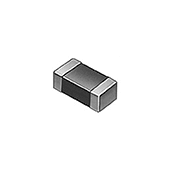
Noise suppression technologies/case study introduction (Automotive)
There are many kinds of problematic noise that are emitted from the devices installed in vehicles.
The examples of the actions taken to suppress noise described here deal with the noise that is radiated from the USB signal cables.
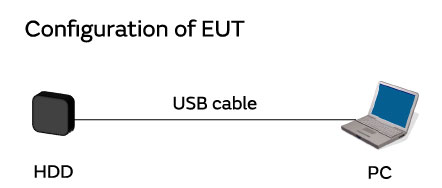
※The EUT here is not a product intended to be installed in a vehicle, but as the noise conditions are similar, a device for general applications is used instead.
※The tests have been carried out in both the USB 2.0 and USB 3.0 modes.
EUT:Equipment Under Test
The same power lines are used in both operation modes equivalent to USB 2.0 and the SuperSpeed operation mode that is the USB 3.0 full standard.
This means that components supporting the 900 mA current in compliance with the USB 3.0 standard are required.
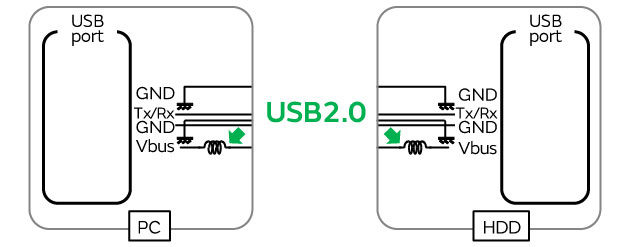
BLM31PG601SH1 chip ferrite beads inserted into power (Vbus) line
Click here for details of the measurement conditions.
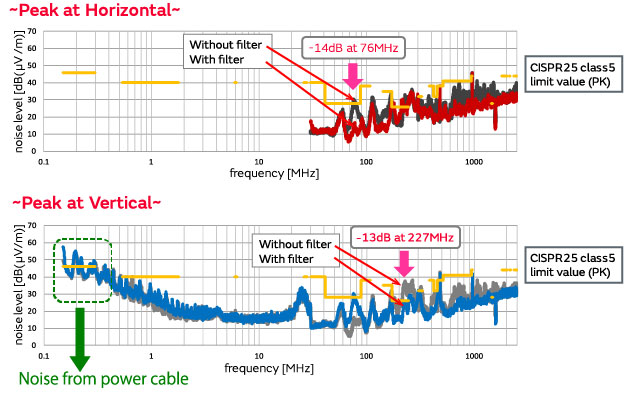
By adding chip ferrite beads (BLM31PG601SH1), the noise was successfully reduced (approx. 14 dB reduction at a horizontally polarized wave frequency of 76 MHz and approx. 13 dB reduction at a vertically polarized wave frequency of 227 MHz).
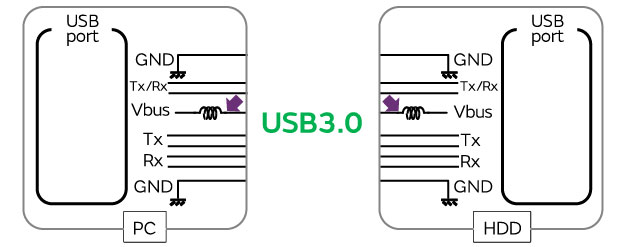
BLM31PG601SH1 chip ferrite beads inserted into power (Vbus) line
Click here for details of the measurement conditions.
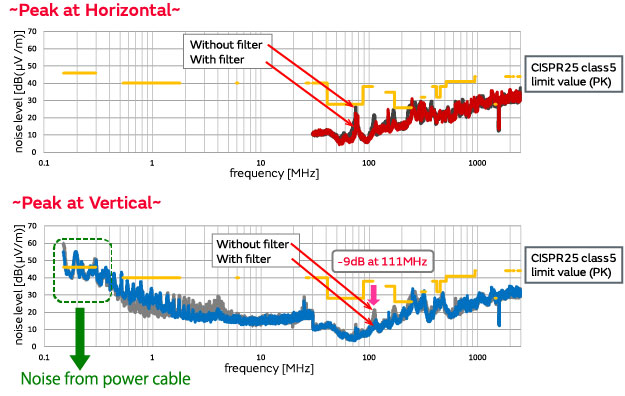
By adding chip ferrite beads (BLM31PG601SH1),
the noise was successfully reduced (approx. 9 dB reduction at a vertically polarized wave frequency of 111 MHz).
Communication in the USB 2.0 and USB 3.0 modes was initiated between a PC and hard drive and, in an environment complying with the CISPR25 standard, the noise radiated from the USB cables was evaluated.
As a result, the following was verified when the BLM31PG601SH1was inserted into the power line:
The noise during USB 2.0 communication was reduced by:
The noise during USB 3.0 communication was reduced by approx. 9 dB (at a vertically polarized wave frequency of 111MHz).
Selection chart for signal lines
Selection chart for power lines